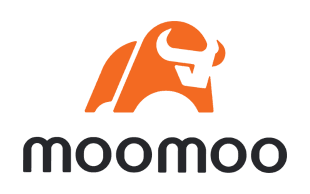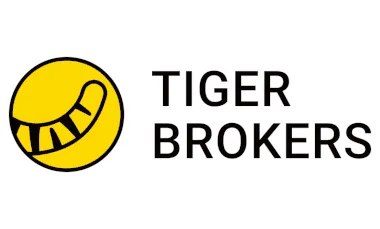Our top pick for
24/5 trading

During reporting season, ASX-listed businesses tell the market how they have performed over the last 6 months.
In the US this is a quarterly event, but in Australia investors only get 2 opportunities a year to deep dive into the financials of the companies they own and to find new opportunities.
Our financial year ends on 30 June but businesses have 2 months after the financial year to get their books in order. As such, the main reporting season takes place in August.
Australia also has half-yearly results released in February for the period up to 31 December.
How the share price will react depends on the long-term outlook and how the market was expecting the business to grow. This means strong growth could still see a falling share price if the market was expecting stronger figures. On the opposite end, a poor financial result could see a share price rise simply because it wasn't as bad as the market expected.
Our top pick for
24/5 trading

Our top pick for
Copy trading

Our top pick for
Mobile app


It's a report that publicly listed companies release every quarter to give shareholders and stakeholders information about how they're performing compared to their previous report. It covers income, per share and sales.
There's some jargon mixed into the report, so it can be difficult to understand what it is you're looking at and how it can be useful for you. In the report, you'll likely find the following information and statements.
The income statement gives you a look at the revenue and expenses of the company. This includes operating revenue (the revenue made from primary activities), non-operating revenue (the revenue made from non-core business activities, such as interest from capital) and gains (the money made from the sale of long-term assets, like a vehicle).
"Revenue" doesn't mean the money net profits. For example, a television production company might recognise the revenue from a TV series when the first episode is aired, as they are almost certainly going to receive payment for it, but they won't be paid the cash for it until the full series has been aired.
The expenses are the costs of the business to operate. This includes the cost of goods sold, depreciation, amortisation, administrative expenses, employee wages, commissions and utilities.
Watch out for the terms "gross" and "net" that indicate the calculation made. Gross is all the money received while net is the gross revenue minus any expenses.
Depreciation is a method of allocating the cost of an asset over its useful life. It's like buying a car you know you'll use for 5 years for $1,000 and saying, "It's basically $200 per year."
Amortisation is a technique used to lower the value of a loan or intangible asset (an asset that isn't physical, but is still valuable) over a set period, such as to spread out loan payments. In reference to assets, it's where you expense the cost of an intangible asset over the projected life of it.
The balance sheet is a snapshot of a company's assets and liabilities at 1 period. It doesn't show this over time, so you'd want to compare it with previous balance sheets if you want an idea of trends over time.
This will have the value of any assets the company owns, such as factory equipment and vehicles. It includes cash, equity and accounts receivable (what is owed to the company).
You'll also see the liabilities, which is money that the company owes, such as bills, debts and salaries.
The final item you'll see on the balance sheet is shareholder equity, which is the assets minus the liabilities. This is the amount due to the shareholders or owners of the business. This is either kept to be reinvested into the business or is paid to shareholders as dividends.
This is the actual movement of cash into and out of the business. In our example of a TV production company above, the revenue would be accounted for when the first episode is aired, but the cash won't go into the company bank account until the final episode airs. This varies from one show to the next, but Friends had 24 episodes per season, which could have amounted to 6 months.
This allows you to check that the business has enough cash flowing into the company to be sustainable. If a company doesn't have enough coming in to cover its operating costs, it won't be able to grow.
The report can give you some great insight into the performance of a company. It lets you take a peek at the numbers behind the company to allow you to make a decision. As the companies aren't able to falsify this information, you essentially get a backstage look at them without any marketing, although they often release a presentation.
However, try not to get too invested in the details of these reports. Otherwise you'll spend a huge amount of time researching stocks. Find some of the key factors that are important to you.
While reports aren't much fun to look at and some might even say, "gross", it's worth checking a few to get your head around what you're looking at. Try to see if you can find some of the above details in them and compare some factors. Eventually, you'll become pro at understanding the ins and outs of the financials of a company.
Finding a platform with an auto-invest feature is key if you want to dollar cost average into the market.
Webull is a broker with zero-commission trading and a suite of tools to help you invest.
We used Finder's proprietary algorithm to find Australian-listed companies that have strong fundamentals and have a share price under $5.
Best performers included Sunrise Energy Metals, Leeuwin Metals and Duketon Mining.
Trade ASX stocks and ETFs with a $2 brokerage fee and a low minimum investment of just $10.
Index funds are a hot topic right now, but how do you actually invest in them?
An online portfolio tracker will help you manage your share investments and track the performance of your portfolio effectively.
Join the world’s largest social trading network and learn from experienced forex traders with eToro Australia.
Compare share trading apps to find out which app has all the tools and resources you need to reach your investment goals.
Find out what tax deductions you're entitled to if you’re a share trader or an investor.